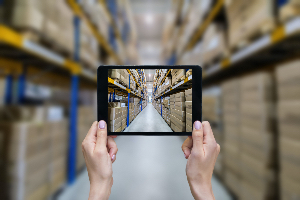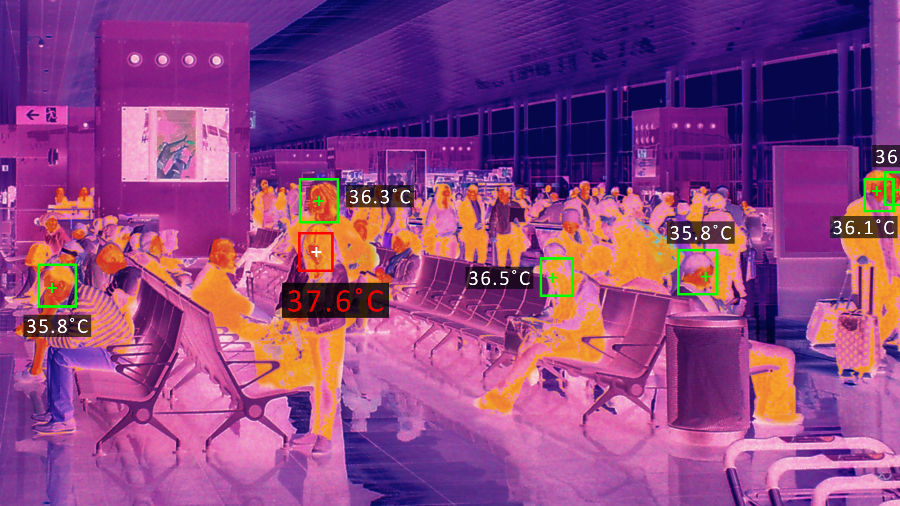By Siddharth Verma, GM – Manufacturing Practice at Hitachi Vantara
Resilience is the capacity to recover quickly from difficulties. For example, when COVID-19 hit the United States, the manufacturing industry had to quickly change in various of ways ― from shutting down nonessential facilities to implementing new workplace health and safety procedures for workers performing essential operations to retooling factories to manufacture products entirely out of the manufacturer’s purview. This was a call to action for Hitachi. On the heels of the announcement of a global emergency, Hitachi employees demonstrated the company’s commitment to power good by asking themselves how they could rethink manufacturing and supply chain systems to be more impactful. At our facility in Oklahoma City, where Hitachi makes and tests large storage racks, we retooled the existing machinery, including robotics and automation, to produce ventilator parts that were in short supply. We quickly changed our supply chain to obtain the required materials and then retooled, tested and implemented the new production process. Our employees worked tirelessly to fill the gap for ventilator manufacturers with the parts that were in short supply ― coordinating with parts producers and custom-building parts to keep the supply chain moving. At the same time, General Motors (GM) employees were learning to produce medical masks to fill another gap in supply. GM collaborated with Esys Automation (a JR Automation company) and JR Automation (a wholly owned subsidiary of Hitachi, Ltd.) to design and build a manufacturing cell that used automation to produce high volumes of masks in a very short period of time. The effort involved rapidly changing the supply chain, retraining employees, and retooling, testing, and implementing equipment. Six days after kickoff, GM produced and delivered 20,000 masks in their first week of production. The facility can now turn out up to 50,000 masks in an 8-hour shift.1 How did these teams implement these transformations so rapidly? By relying on a resilient manufacturing pyramid.

Under any circumstances, the manufacturing pyramid has three levels: 1. The foundation (employees and operations) 2. The supply chain 3. The market
COVID-19 rocked the pyramid. Operations ceased, and many employees were forced out of work. Others had to continue to work, but with new concerns about workplace health and safety. The supply chain was turned upside down, as desperately needed supplies were inadequate to meet the demand. Some supply chains vanished completely. Others were available but not yet set up to meet new needs. Market demand changed dramatically. “Fit for purpose” became the defining differentiator. COVID-19 immediately propelled manufacturers into the “demand change era.” In this new era, manufacturers must quickly respond to both foreseen and unforeseen circumstances with the ability to create fit-for-purpose products. To do this, their manufacturing pyramid must be both rock solid and fluidly nimble ― in other words, resilient. Manufacturers that were resilient — like Hitachi, Esys, JR Automation and GM — were able to keep their pyramids from collapsing.
In this new demand change era, manufacturers must manage operations based on what’s needed at the time. Ramp-up mean “immediate shutdown, retool, resupply, restart.” Although the pyramid levels will remain the same, success will be based on manufacturers' ability to recreate repeatedly. Securing the foundation ( maintaining workplace efficiency, health and safety) will depend on innovative manufacturing solutions that can test for and find hazardous situations. Visibility into all aspects of the supply chain will drive resilience by pinpointing risk, enabling scenario planning and providing options for quick pivots. Meeting market demand as it changes will require dynamic scheduling that can lead to the efficient production of orders in real or near-real time. Our solutions can help build smarter, resilient manufacturing and supply chain ecosystems that can prepare manufacturers for similar situations in the future. Hitachi’s powerful and unique Lumada technology and other innovative automated and digital solutions address every aspect of the pyramid. For example, in the case of COVID-19, thermal scanning cameras can identify elevated body temperatures. Video monitoring can assess personal protective equipment (PPE) usage. Imagery and analytics enable fast and accurate contact tracing.

Hitachi is a solutions company, but we’re also a manufacturer. We have ensured our own resilience by adapting our thermal cameras to assure the safety of our workers and enabling this same implementation with our partners. We’re building and testing for regulatory compliance within our own facilities and working on how to scale these solutions globally so we can help others have the same success. Our goal is to ensure what we produce is fit for purpose, then help other companies achieve a similar outcome. With more than 400 manufacturing and distribution facilities powered by more than 140,000 employees in the Hitachi family companies, we know just how crucial our employees’ commitment and contributions are to helping make the world a better place. Fostering a more collaborative environment and people-centric management approach is critical to enabling a cultural shift that enables real change — and ultimately paves the way for a sustainable and resilient future of manufacturing. At Hitachi, we’ve implemented a "Heroes in Manufacturing" initiative to bring visibility to the everyday manufacturing heroes who make a difference in everyone’s lives. From delivering forward-moving manufacturing automation to providing logistics and ensuring workplace safety, ordinary people are doing heroic things every day, demonstrating resilience in action.
The COVID-19 pandemic has brought a new dimension of concerns to worker health and safety on the factory floor. It has also exposed how an overreliance on manual operations and the lack of visibility into supply chains profoundly impacts organizational agility and production planning. There is an urgent need to build a more transparent, flexible and resilient supply chain, not only to address the most pressing business challenges but also to reduce the carbon footprint and support a sustainable future.
The future of manufacturing depends on modernized, optimized and automated processes for operations, supply chains and production as well as across every aspect of the manufacturing operation, including workplace health and safety, environment, asset insights, and predictive maintenance and service. Companies need to use their data more effectively to drive sustainability and innovation in manufacturing, increase market share, improve brand image, and achieve many other benefits beyond operational efficiency and cost savings. Accelerating the adoption of digitization and automation in the manufacturing industry is therefore essential to build agility, resilience and drive business growth.
Every company has been tested by COVID-19 regarding how much and how quickly it can change and adapt. This will not be the last time companies are tested. Whether it’s another pandemic, a natural disaster or simply changing customer demands, manufacturers must be resilient. They must be able to quickly respond to both outside and internal forces so they can deliver solutions that meet customer needs and make the world a better place. How are you thinking about this new environment and the potential forces that could disrupt your business? What are you doing now to make sure your company is resilient in the future?
Through the increased use of digital technologies, video and 3D LiDAR-assisted monitoring, and factory automation, today's manufacturers can find new ways to address the challenges posed by COVID -19.
Hitachi offers a full suite of digital manufacturing solutions and consulting services. With our experience in smart manufacturing solutions combined with advanced digital technologies such as artificial intelligence (AI), blockchain and real-time data analytics, we can help you solve today’s challenges and prepare for the manufacturing industry of tomorrow. Leveraging our robust IT and operational technology experience combined with our industry-specific expertise, we can work with you to envision, architect and accelerate your manufacturing digital transformation journey. Make your factory smarter, more adaptive, more responsive and ready for Industry 4.0, resulting in better products, happier customers and greater business success.
How can we help you transform your business with innovative solutions for a healthier, safer, more resilient future?

GM – Manufacturing Practice
Sid is a GM of the Mfg Practice at Hitachi Vantara, focused on incubating and growing the services and solution footprint at our discrete / process mfg customers along with Hitachi Front BUs. Prior to Hitachi, Sid lead the Innovation and Industrial IoT business for Siemens and was responsible for building the Industrial IoT services practice at Deloitte Digital. Sid specializes in Digital Manufacturing (Industry 4.0), Digital Supply Chain, Asset Performance Management, Analytics and Insights offering. Sid brings in extensive experience managing Business Strategy, IT Strategy, Enterprise / Solution Architecture, Agile Delivery and Operational/IT Transformation. Sid has expertise across various IoT / Big Data / ML+ AI + Data Science platforms.